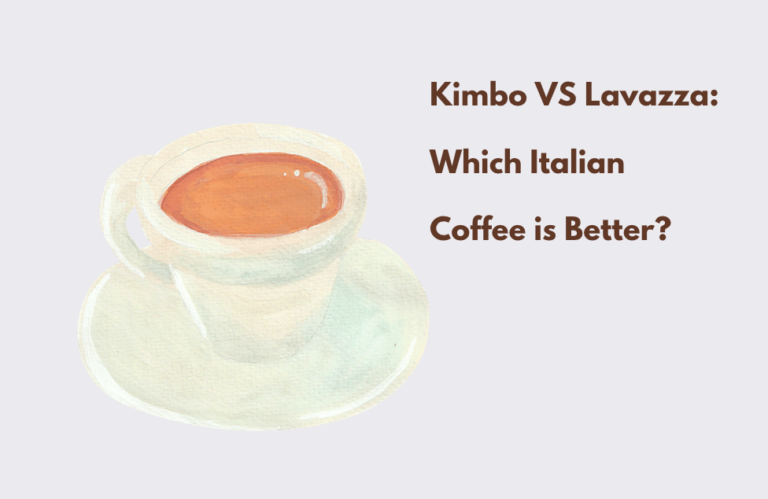
This post may contain affiliate links. As an Amazon Associate and a partner of other brands, I get a small commission if you purchase through my links, at no extra cost from you.
We love coffee, and so do the people of Ethiopia and Kenya. They share a love for their native beans, and both countries produce some of the world’s best coffee.
But there’s more to it than that. In fact, these two nations have very distinct approaches to growing and roasting their favorite crop and this makes all the difference in the world!
So what makes Ethiopian coffee unique? Is Kenyan coffee similar or different? What are some popular varieties on each side of this great divide?
Get ready to dive into the murky waters between these two countries as we explore all things “coffee”!
Ethiopia is a country in East Africa, and its coffee is some of the best in the world.
Ethiopia is a landlocked country in East Africa. The most common varieties of coffee grown there are Arabica (which accounts for 80% of all coffee) and Robusta (20%).
Ethiopian beans are graded by quality and region: Yirgacheffe is considered one of the highest-quality coffees in all of Ethiopia. Sidamo is another region known for producing high-quality beans; Harar has some unique flavors due to its higher altitude.
Limu produces smaller beans that have an earthy taste because they’re grown at lower altitudes than other regions’ crops; while Washed Sidamo produces bigger beans with lighter flavors than those produced by unprocessed beans from this area.
You can also read our ultimate article for the coffee culture for all the new coffee lovers out there!
Which are the top three Ethiopian coffees?
If you’re looking for the best Ethiopian coffees, you’ll want to look for Sidamo, Yirgacheffe and Djimmah. These three coffees are not only the most popular in Ethiopia but also among international coffee enthusiasts.
Sidamo is the most common variety of coffee grown in Ethiopia and accounts for about 40% of all beans produced there. It has a mild flavor profile with notes of sweet cherry and chocolate undertones that make it perfect for both espresso lovers and drip brewing methods alike.
Don’t miss the chance to buy this coffee!
Yirgacheffe is another popular varietal that produces light-bodied brews with floral notes on the nose followed by hints of fruit such as peach or apricot when brewed properly.
This is by far my most favourite Ethiopian coffee beans!
This particular variety thrives at high altitudes (around 2000 meters above sea level) which means they have thicker skins than other types so they require extra care when processing them into green beans before roasting them–but if done right, this can result in some pretty spectacular results!
What reputation has the Kenyan coffee?
Ethiopian coffee is known for its complex flavors and aroma. It’s often described as fruity, floral and sweet. Kenyan coffee has a reputation for being high quality, but it’s not as complex as Ethiopian coffee.
Kenyan beans are grown on larger farms than their Ethiopian counterparts and tend to be less expensive–but they also have a different flavor profile that some people prefer over Ethiopian beans: Kenyan coffees tend to be more mild in acidity (the tartness of your mouth after drinking something sour), with a smoother body and less acidity overall.
Which is the main difference between Ethiopian vs Kenyan coffee?
Ethiopian coffee and Kenyan coffee are similar in many ways. They’re both grown on small farms by smallholders, mostly women. The beans from these farms are then sold to exporters and roasters who turn them into packaged products for consumers around the world.
But there are some key differences between Ethiopian and Kenyan coffees as well–and they’re not just about how they taste!
In Ethiopia, coffee is grown on small farms by smallholders, mostly women.
Ethiopian coffee is grown on small farms by smallholders, mostly women. In Ethiopia, coffee is grown at high altitudes in a climate that ranges from tropical to subtropical with an average temperature of 72 degrees Fahrenheit (22 degrees Celcius).
Farmers often use traditional methods like intercropping or shade-grown coffee to protect their plants from pests and disease while also preserving the environment around them.
Ethiopian farmers are known for being hardworking and resilient–and many are women who have become leaders for their communities through their commitment to sustainable farming practices that help preserve both land quality as well as community health and wellbeing
In Kenya, most coffee comes from large plantations.
In Kenya, most coffee comes from large plantations. The country is home to over 1.7 million hectares (6,500 square miles) of arable land and has become known as the “breadbasket” of Africa because it produces almost half of all African food exports.
One of my suggestions is the “Copper Moon Whole Bean Coffee“
And the other is again an excellent one: TruHighlands Coffee Kenya
In fact, Kenya’s economy relies heavily on its agricultural sector–it accounts for about 20% of GDP and employs 37% percent of the population.
This means that many Kenyans make their living off farming or working in related industries like processing and packaging coffee beans for export.
Ethiopian coffee tends to be more earthy and complex than Kenyan coffee.
Ethiopian coffee tends to be more earthy and complex than Kenyan coffee. Ethiopian beans have a reputation for being high quality, but it’s not as complex as Ethiopian coffee.
Ethiopia is the birthplace of coffee, and it has been producing some of the best-tasting varieties in the world for generations.
The country’s climate is ideal for growing coffee plants: They thrive in hot weather with plenty of rain (which helps them produce large amounts of fruit) and soil that’s rich with minerals found nowhere else on earth!
If you like variety, try an Ethiopian coffee!
If you like variety and complexity, Ethiopian coffee is the way to go. Since there are so many different kinds of beans from this region, you’ll have a lot more options than with Kenyan coffee.
Plus, since most of the farms are small-scale and owned by women (who tend to be more environmentally conscious), it’s easier for farmers to improve their methods if they want to do so.
Ethiopian coffee tends to be earthier in flavour compared with Kenyan blends–not necessarily better or worse, just different!
Conclusion!
We hope this article has helped you understand the difference between Ethiopian and Kenyan coffee. If you’re looking for something earthy and complex, try an Ethiopian coffee!
But if you prefer something smooth and sweet, then Kenyan may be your best bet. As always, remember that there are many other varieties of coffee out there–and we encourage trying them all!






